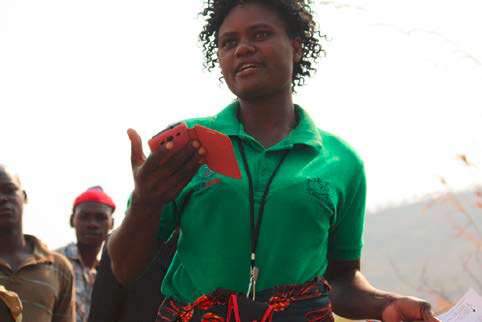
The Evaluation, Research, and Communication team (ERC) is currently preparing for the endline data collection and analysis of the Tenure and Global Climate Change (TGCC) impact evaluation (IE) in Zambia. The foundation for the endline analysis is laid out in the pre-analysis plan and a major part of that is reviewing and incorporating monitoring and evaluation (M&E) data collected from implementing partners. M&E data provide important information for endline data collection and analyses planning, and better inform the interpretation of endline results. During this quarter, ERC collaborated with E3/Land and the TGCC implementing teams to develop a detailed M&E protocol with corresponding instruments, and then to collect the M&E data.
The Chipata District Land Alliance (CDLA) implemented a land tenure certification program while COMACO implemented an agroforestry extension program, each working concurrently within and around the same regions. CDLA and COMACO each completed M&E instruments, which consisted of two short structured surveys and two short open-ended qualitative questionnaires, providing basic and extended information for their respective interventions. In particular, the quantitative surveys collected basic implementation information across the interventions, and identify any major differences in program implementation across villages and key reasons for this. The data collected from CDLA M&E tools provide a strong understanding of household land registration processes under the program, the different types of land categories that are used, and the people who were chosen by the households to be listed on the document. The data collected from the COMACO tools describe implementation activities in detail, including the process that was used for offering the agroforestry intervention to households in the agroforestry treatment villages, and some of the observed reasons for stronger or weaker interest in agroforestry among targeted households.
M&E data allows for more accurate tests and interpretations of reasons for impact variation. It also makes it possible to create indicator variables that can be used in the endline analyses to test how program implementation differences might moderate impacts. Specifically, this M&E data establish how the land tenure and agroforestry interventions are proceeding in practice relative to how the program was planned and enables the IE team to verify the nature and timing of the different activities. Furthermore, identifying any major variations in program implementation across villages can reveal potential outlier cases or issues that could influence results, and appropriate analytic steps can be taken. With all of this information, the IE instruments can be updated by adding or removing questions as appropriate based on actual implementation results and any indicators to be developed.

